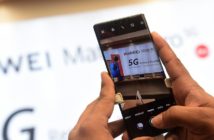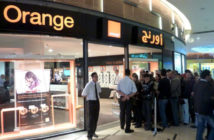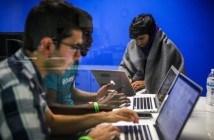
By QUENTIN HARDY
Big Data is in more places than you know, perhaps even your living room.
Nest Labs makes a smart thermostat that promotes energy saving by studying its owner’s habits and predicting things about when people are home and what they are likely to do with their home heating and cooling. Using a clever system of awards for the homeowner (green “leaves” for doing the energy-efficient thing), the thermostat is intended to save money through efficiency.
Since its ballyhooed launch in October, the $249 device has sold “in the mid-hundreds of thousands” of units, according to the company. That is not yet a barn burner, so to speak, but it’s not bad for a device that costs about twice what a standard energy-saving thermostat does.
The device also collects enough data that Nest can start to draw from really large data sets on consumption and correlate that knowledge with information from other sources, like weather forecasts, to make a more powerful product.
Each Nest thermostat “is as powerful as a high-end smartphone, and they communicate with each other inside a house,” says Tony Fadell, Nest’s founder and chief executive. “We can gather all that data, mix it with other data we store in the cloud, and push different algorithms to different houses to see how people react.”
That approach, continually testing one feature against another and going with the one that consumers respond to best, is called A/B testing when done with Internet software. It is how Google and others make their products. As more physical objects fill up with software and develop two-way interactions with the network, Mr. Fadell says, they can be developed the same way.
The data from the thermostats includes things like when people are home. Cats and small dogs can be separated out from humans, since the thermostats have motion sensors that can determine the relative masses of different-size critters. Data in Nest’s cloud servers crunches their information with things like the customer’s ZIP code, location and weather forecasts. If it looks like it’s getting cold, the system can then turn on the heating faster.
As with much of the software released over the Internet and then adjusted as its creators see what customers do with it, the thermostat’s actions have changed as the company has learned about human habits.
“We found that people are more predictable in their habits, things like when they go out in the morning,” Mr. Fadell says.
Part of what the company needs to do, he says, is to make sure people feel that their machine understands them. “It’s really important to give a lot of weight to any errors in prediction, so you don’t make them again,” he says.
The company also sends customers reports on their energy-saving behavior (including how many “leaves” they earned) and compares that information with local and national averages. Nothing like a little competition to keep people interested.
Some of the education has been specific to a single house. A feature introduced last spring focused on the time an air conditioner’s compressor needed to be on to generate enough cool air to bring a specific home’s temperature down. Usually the compressor is on the whole time fans are blowing over it and circulating the air, so limiting the use of the compressor saved about 30 percent of energy expended.
Mr. Fadell, who earlier played important roles in the creation of the iPod and the iPhone at Apple, indicated that Nest’s data-driven education about the home won’t just go into that thing on the wall.
“Algorithms can really change the way we use energy and how we interact with all kinds of products,” Mr. Fadell says. “The company is called ‘Nest,’ not ‘Thermostat.'”
I also asked Mr. Fadell about energy savings in general. Even more important than his device, or solar panels, or anything else, he said, was decent insulation and well-fitted doors and windows.
“Worry about that before anything else,” he said.






